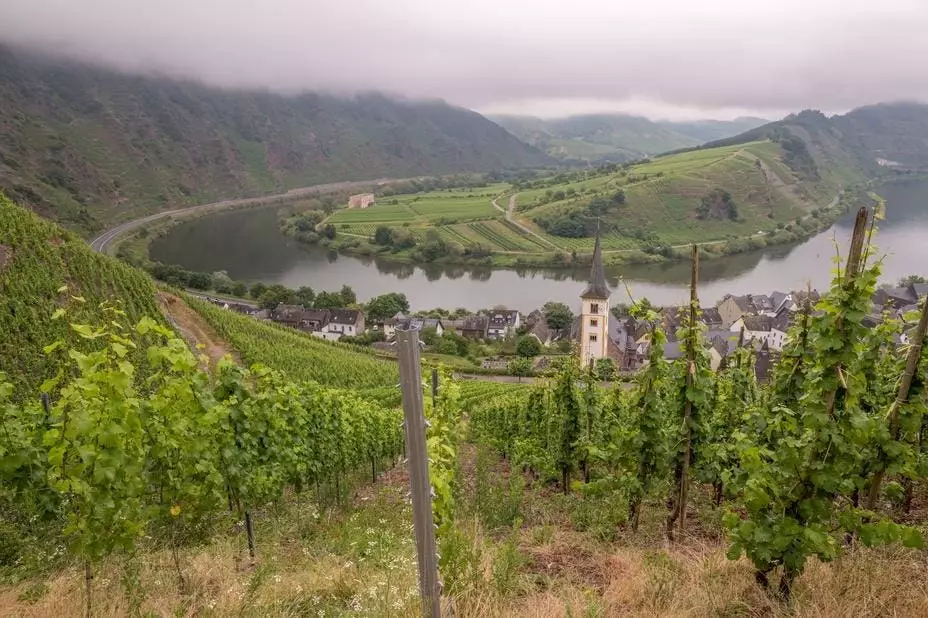Standing atop the steep slopes of Weingut Carl Loewen’s vineyard in the Thörnicher Ritcher Vineyard, one can’t help but wonder why anyone would choose to plant vineyards in such a challenging location. However, the answer becomes clear when you consider the ideal cool microclimate that the Mosel region offers. With grey slate mingling with quartzite underfoot, this area provides the perfect conditions for golden Riesling grapes to thrive, resulting in high-acid wines with tension and verve. The combination of the twisting Mosel River, mostly slate soils, a relatively cool climate, and a tradition of small growers working small plots truly makes the Mosel a cosmos unto itself.
While the Mosel region is home to a variety of grapes, it is best known for its Riesling. The history of Riesling in this region dates back to 1435 when the first Riesling was made. Through the centuries, Riesling has become the flagship grape of the region, prized for its sweetness by English nobility in the 18th century. German Riesling is unique in its ability to accumulate high levels of natural sugars while retaining high acidity, creating a tantalizing tension in the wines. In the past, sweet wines were favored, but today, there is a resurgence of interest in dry Rieslings. The current generation of Riesling producers in the Mosel region is going back to traditional farming and winemaking methods, resulting in a revival of dry wines alongside off-dry and sweet ones.
The Shift Towards Quality and Sustainability
From large wineries like Weingut Markus Molitor to smaller operations like Weingut Carl Loewen, the focus in the Mosel region remains on growing exceptional grapes and showcasing site-specific terroir with minimal intervention in the winemaking process. Many wineries are adopting sustainable, organic, and biodynamic practices to ensure the quality and authenticity of their wines. The commitment to balance in viticulture is a common theme among Mosel winemakers, with a focus on creating wines that reflect the unique characteristics of their vineyards. The region is also adapting to the trend towards lower alcohol wines, emphasizing freshness and moderate alcohol levels in their offerings.
Selecting a high-quality Mosel Riesling at the desired sweetness level can be a challenge, even for wine professionals. However, wine education can be a fun and rewarding experience. By seeking out articles, visiting local wine retailers, and exploring the different sweetness levels of Mosel Rieslings, wine enthusiasts can expand their knowledge and appreciation for these wines. Quality indicators like Qualitätswein and Prädikatswein can be confusing, but local wine professionals are always eager to help guide customers through the selection process. German Riesling is a versatile wine that pairs well with a variety of foods, offering a unique drinking experience for every palate.
The Bright Future of Mosel Riesling
With iconic vineyards like Berncasteler Doctor and passionate winemakers like Christopher Loewen and Lara and Niklas Haag, the Mosel region is experiencing a period of thrilling reinvention. Families with generations of winemaking tradition, as well as innovative and environmentally conscious producers, are shaping the future of Mosel Riesling. The region’s unique terroir, microclimates, and commitment to quality make it one of the world’s premier wine regions, producing some of the finest Rieslings available. As the world begins to recognize and appreciate the treasures of the Mosel, the future looks bright for this magical wine region.

